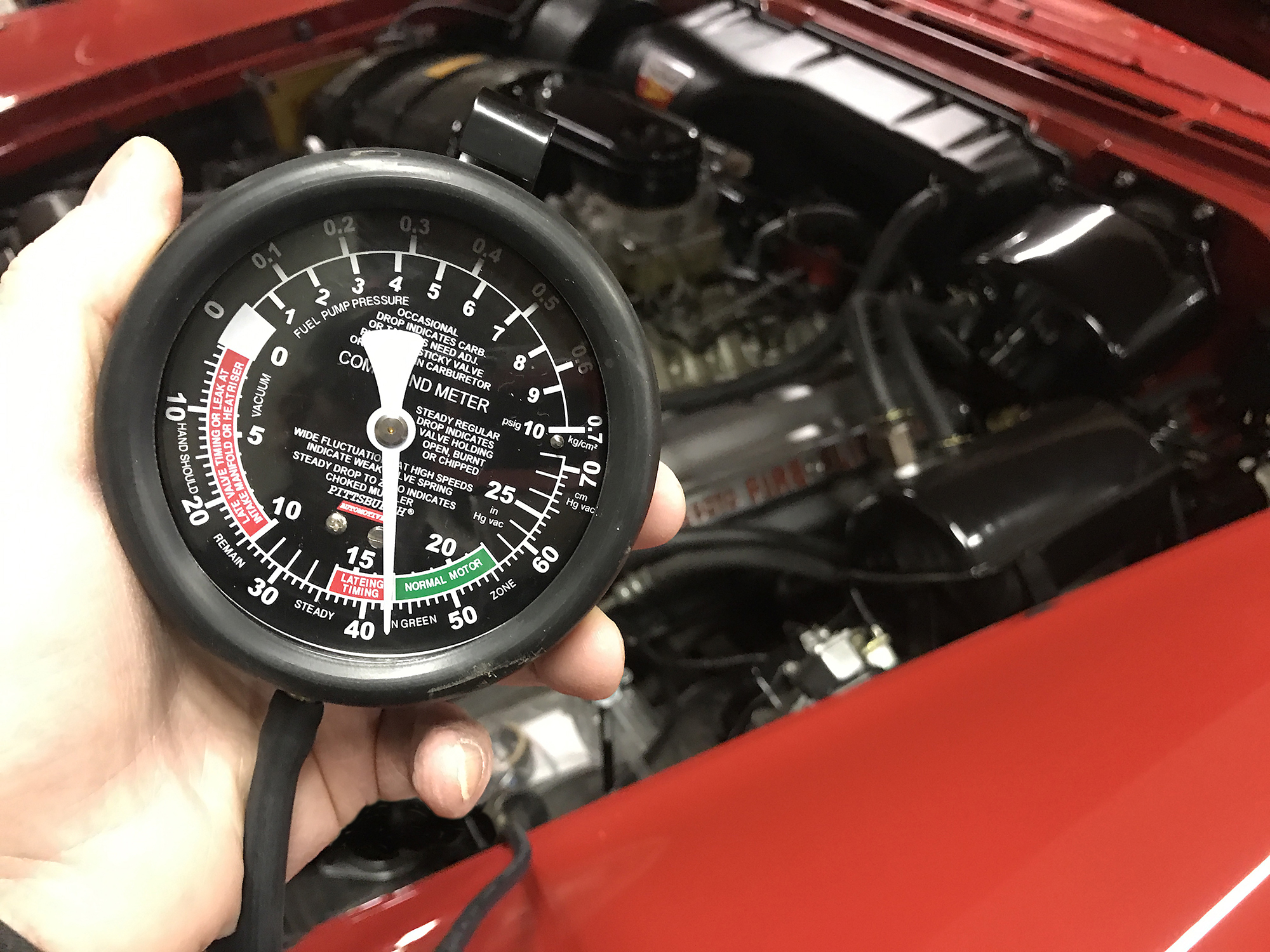Years ago, a good friend introduced me to using a vacuum gauge to diagnose engine problems, in-fact it was often the first tool he would reach for when confronted with a poorly running engine. I’ll admit to being a little skeptical at first, but over the years I have become convinced that engine vacuum is a great source for information in helping diagnose problems inside the engine. Of course, high-performance engines with lopey camshafts often make little vacuum but even then the vacuum gauge can give you insights to the inner workings of your engine.
Simply put, the vacuum gauge has proven itself time and time again to be an invaluable tool in troubleshooting engine problems.
The key to using a vacuum gauge to diagnose engine problems is to understand exactly what the gauge is telling you. When armed with this knowledge you’ll be able to quickly discern between simple tuning issues to potentially more severe mechanical problems.
Good quality vacuum testing gauges are available at most auto parts stores and online resources, and are relatively inexpensive. Before beginning any vacuum testing, a visual inspection should be made of the entire vacuum system. Check all hoses, hose connections, and all open ports on carburetors and intake manifold are plugged (note: some cars also have vacuum operated heat/ac controls).
To get started, hook the vacuum gauge to an intake manifold vacuum source. Manufacturers install ports on their manifolds for lots of different reasons: Brake Booster, PCV tube, EGR Switch, A/C vents, etc. You simply need to find one small enough for the vacuum gauge line to slide onto firmly. This is also done with a tee on an existing line or pulling a line and connecting it direct (for example, the vacuum line to the transmission can be used). Start your engine and allow it to come up to operating temperature before testing.
Common Vacuum Test Results:
Normal Engine: On most engines, accelerate to around 2000 rpm and then quickly release the throttle. The engine should snap right back to a steady 17- 21″hg vacuum.
Steady low between 5-10″hg vacuum: This indicates that the engine has a leak in the intake manifold or the intake gasket.
Steady low between 10-15″hg vacuum: This reading indicates late valve timing. There’s a chance the vehicle has jumped timing. Check the timing belt or chain depending on the application.
Steady low between 15-18″hg vacuum: This low reading indicates retarded ignition timing. Advance the timing on the distributor to correct this problem, and recheck vacuum.
Fluctuating Needle: A fluctuating needle indicates there’s a problem with a valve or a there’s an engine misfire.
Needle drops during acceleration: If the needle drops steady during acceleration there’s a restriction in the exhaust or intake. This is typically due to a clogged muffler or exhaust system.
Also see vacuum gauge chart.
Print it out and hang it on your tool box, and you’ll never second guess what your gauge is telling you!



When using a vacuum gauge for engine diagnostics on the typical factory stock type engine with a mild camshaft, set the initial ignition timing to factory specs, it is common to advance the ignition timing for performance and economy reasons, but this will skew the accuracy of the results. If an engine will not "pull" its rated manifold vacuum, find out why, because it will never run right and can't be made to run right. The carburetor in particular, and vacuum advance, are calibrated on a strong crisp signal.
Will ithe readings work on supercharged engines? On idle a forced induction system is passive so i guess it should work fine if the vacuum is taken after the supercharger.
Love your information
I recently upgraded my "Fishing Buggy" a 1978 Chevy G20 van engine to a 350 / 290 Chevy Crate Engine. I have a small vibration AT 1400 RPM. GM states either a 6 3/4 or an 8 inch harmonic balancer is OK for this engine. I installed a new 6 3/4 balancer. What exactly is the difference (effects on balance and/or performance) between the two balancer diameter sizes?? Thank you - Frank M.
Thanks for the tip! Definitely will come in handy!
A good source for engine trouble shooting...
Do you know of a supplier that repairs dole vacuum rotary HVAC valve for a 59 Edsel, Mercury ,or Lincoln
2015 mustang 2.3 steady reading at 25. any idea what it could be? thanks
great site found u when looking for info on vacuums gauge I have not used in 30 years, neighbor has a run down 76 dodge pick up with a 318, looking and running like crap . was going to help out and yes I am a bow tie guy,1st car 57 B210 sedan 60 over 283........
<strong> Thanks for the great info. Could you possibly answer this question; I used my vacuum gauge and it had a reading: 25 inches. What would cause it to be so high?